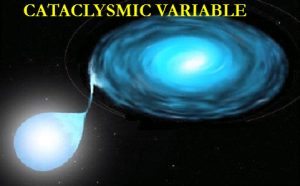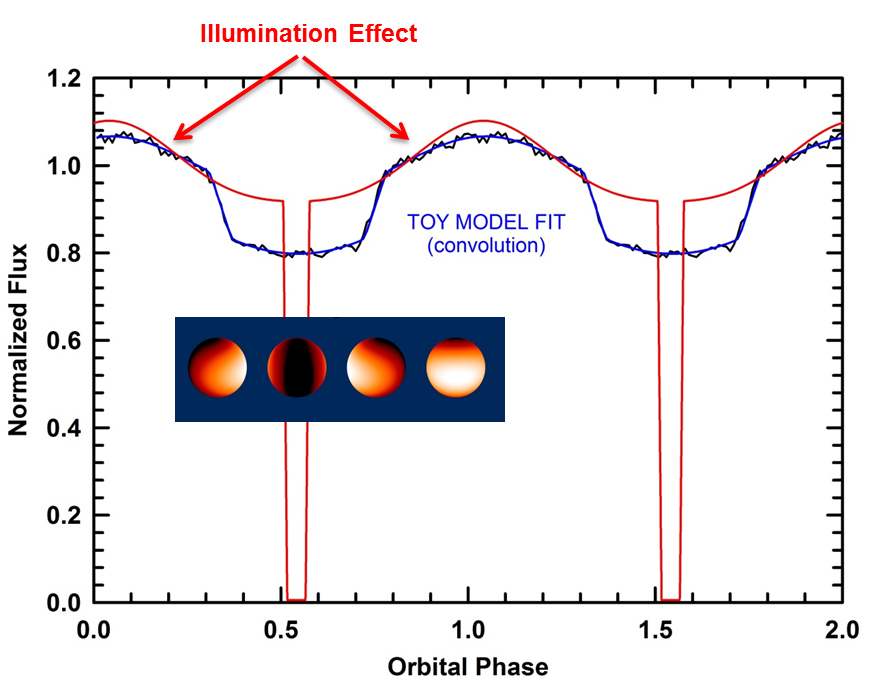A CRAQ researcher makes a very rare discovery: Failed star orbits a dead star every 71 minutes
 An international team of astronomers using data from the rejuvenated Kepler space telescope have discovered a rare gem: A binary system consisting of a failed star, also known as a brown dwarf, and the remnant of a dead star known as a white dwarf. And one of the properties that makes this binary so remarkable is that the orbital period of the two objects is only 71.2 minutes. This means that the speeds of the stars as they orbit each other are about 100 km/sec (a speed that would allow you to travel across the Atlantic in less than a minute). Using five different ground-based telescopes across three continents, the team was able to deduce that this binary system consists of a failed star with a mass of about 6.7% that of the Sun (equivalent to 67 Jupiter masses) and a white dwarf that has a mass of about 40% of the Sun’s mass. They have also determined that the white dwarf will begin cannibalizing the brown dwarf in less than 250 million years making this binary the shortest-period pre-cataclysmic variable ever to have been discovered.
An international team of astronomers using data from the rejuvenated Kepler space telescope have discovered a rare gem: A binary system consisting of a failed star, also known as a brown dwarf, and the remnant of a dead star known as a white dwarf. And one of the properties that makes this binary so remarkable is that the orbital period of the two objects is only 71.2 minutes. This means that the speeds of the stars as they orbit each other are about 100 km/sec (a speed that would allow you to travel across the Atlantic in less than a minute). Using five different ground-based telescopes across three continents, the team was able to deduce that this binary system consists of a failed star with a mass of about 6.7% that of the Sun (equivalent to 67 Jupiter masses) and a white dwarf that has a mass of about 40% of the Sun’s mass. They have also determined that the white dwarf will begin cannibalizing the brown dwarf in less than 250 million years making this binary the shortest-period pre-cataclysmic variable ever to have been discovered.
The hot white dwarf star had originally been identified by SDSS as WD1202-024 and was thought to be an isolated star. The fact that it is actually a member of a very close 71-minute binary was announced by Prefessor Lorne Nelson of Bishop’s University, also a member of the Center for Research in Astrophysics of Quebec (CRAQ), at the semi-annual meeting of the American Astronomical Society in Austin, TX on June 6th. Dr. Saul Rappaport (M.I.T.) and Andrew Vanderburg (Harvard Smithsonian Center for Astrophysics) were analyzing the light-curves of more than 28,000 K2 targets when one observation caught their attention. Unlike the transits of exoplanets that pass in front of their host stars and cause a small attenuation in the brightness of the star, this light curve showed reasonably deep and broad eclipses with a sinusoidal contribution to the brightness between eclipses that is thought to be due to an illumination of the cool component by the much hotter white dwarf.
The team quickly devised a model for the binary showing that it was consistent with a hot white dwarf composed of helium being eclipsed by a much cooler and lower-mass brown dwarf companion that is seen nearly edge-on. A 3-D animation of the orbit and its lightcurve can be found at http://physics.ubishops.ca/wd1202/anim.mp4. Notice how the hemisphere facing the hot white dwarf is highly irradiated while the other is quite ‘dark.’
But some big questions remained. As Lorne Nelson said, “We had constructed a robust model but we still had to address the ‘big-picture’ issues such as how this system formed and what would be its ultimate fate.” In order to address this question the team used sophisticated computer models to simulate the formation and evolution of WD1202. According to their scenario, the primordial binary consisted of an ordinary 1.25 solar-mass star and a brown dwarf that were in a 150 day orbit with each other. The star expanded as it aged becoming a red giant that then engulfed its brown dwarf companion. As Nelson explains, “It is similar to an egg-beater effect. The brown dwarf spirals in towards the center of the red giant and causes most of the mass of the red giant to be lifted off of the core and to be expelled. The result is a brown dwarf in an extraordinarily tight, short-period orbit with the hot helium core of the giant. That core then cools and becomes the white dwarf that we observe today.” According to their calculations, the primordial binary formed about 3 billion years ago and the common envelope phase occurred relatively recently, about 50 million years ago.
So what will happen in the future? The team believes that the emission of gravitational waves will deplete the orbital energy of the binary so that in about 250 million years (or less), the separation between the white dwarf and brown dwarf will be so small that the brown dwarf will start to be cannibalized by its white dwarf neighbor. When this happens, the binary will exhibit all of the characteristics of a cataclysmic variable (CV) such as a flickering lightcurve due to accretion from a disk that surrounds the white dwarf. For this reason, the team believes that the WD1202 system can rightly be referred to as the shortest period pre-CV that has been discovered to date.
A preprint copy of the paper “WD 1202-024: The Shortest-Period Pre-Cataclysmic Variable,” by S. Rappaport, A. Vanderburg, L. Nelson, B. L. Gary, T. G. Kaye, B. Kalomeni, S. B. Howell, J. R. Thorstensen, F.-R. Lachapelle, M. Lundy, and J. St-Antoine, submitted to Monthly Notices of the Royal Astronomical Society is available at: https://arxiv.org/abs/1705.05863.
Source:
Chantal Sneath
Communications Officer
Bishop’s University
csneath@ubishops.ca
(819) 822-9600 x2840
Professor Lorne Nelson
Dept. of Physics and Astronomy
Bishop’s University
lnelson@ubishops.ca
(819) 822-9600 x2372

